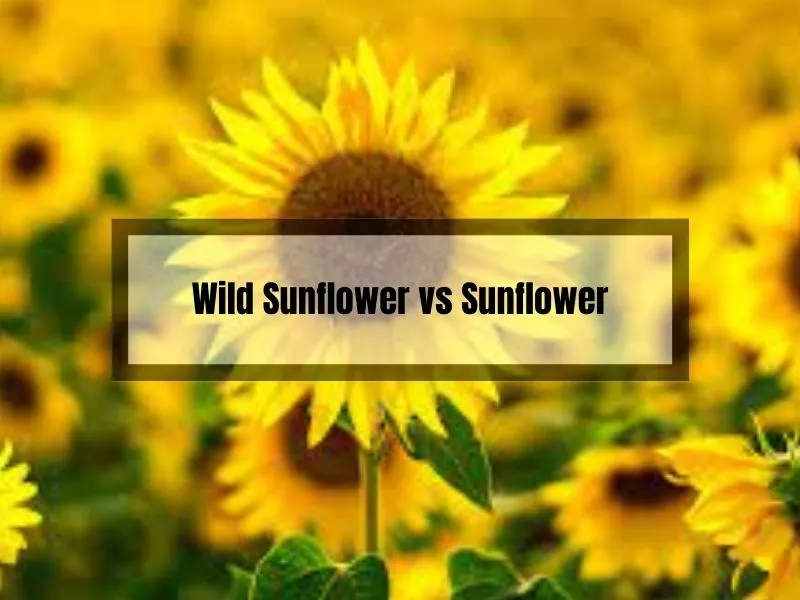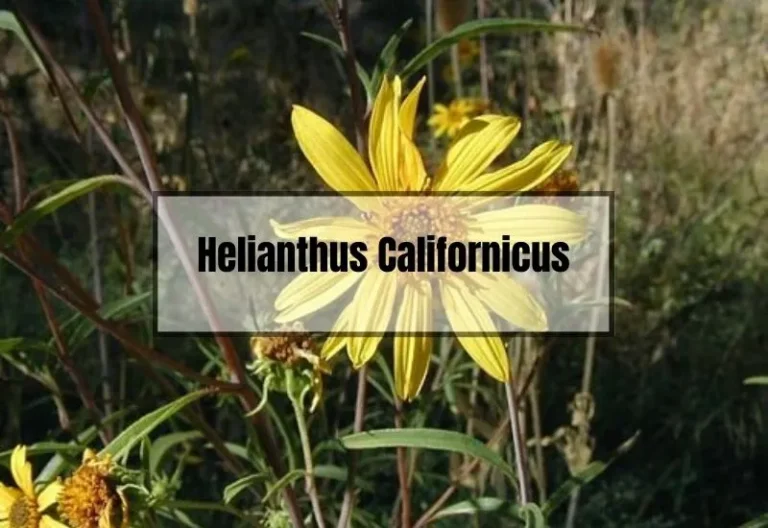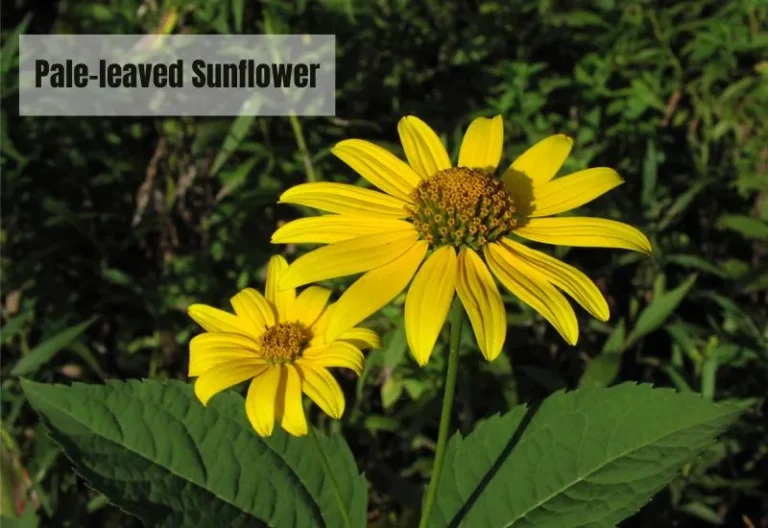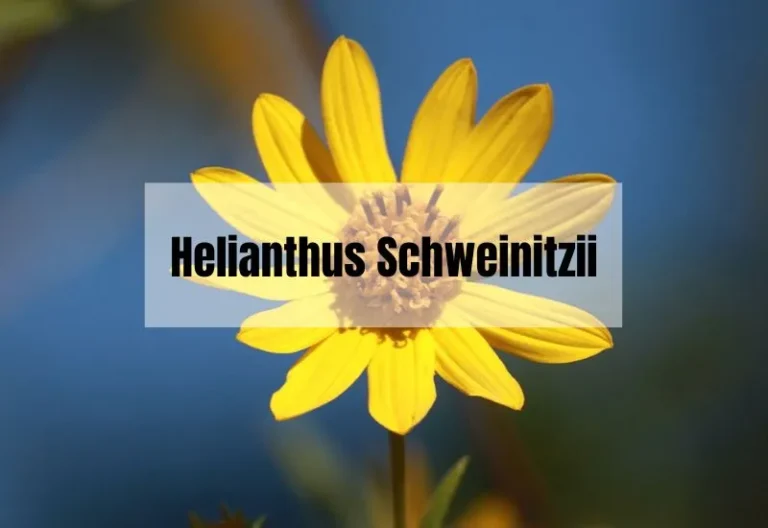Wild Sunflower vs Sunflower: What’s the Difference?
Wild sunflowers and sunflowers, often confused due to their similarities, have distinct differences that set them apart. In this article, we’ll explore these variations.
Wild sunflowers, native to North America for thousands of years, are smaller (2-5 inches in diameter) and come in various colors. They’re known for self-pollination. In contrast, sunflowers are larger (up to 18 inches in diameter) and are popular for their showy flowers and edible seeds. They rely on pollinators like bees for reproduction.
Key Takeaways
- Wild sunflowers are the original sunflowers that grew in North America for thousands of years before being domesticated by Native Americans.
- Wild sunflowers are typically smaller than domesticated sunflowers, with flowers that range from 2-5 inches in diameter and come in a variety of colors.
- Sunflowers are typically larger than wild sunflowers, with flowers that can be up to 18 inches in diameter and require bees or other pollinators to reproduce.

Wild Sunflower vs Sunflower
When it comes to sunflowers, most people think of the classic yellow flower with a dark center. However, there are actually two types of sunflowers: wild sunflowers and domesticated sunflowers.
While they may look similar at first glance, there are some key differences between the two. In this section, we’ll explore what sets wild sunflowers apart from their domesticated counterparts.
What is a Wild Sunflower?
Wild sunflowers, also known as Helianthus annuus, are the original sunflowers that grow naturally in North America. They are often found in fields, along roadsides, and in other open spaces. Wild sunflowers are typically smaller than domesticated sunflowers, with flowers that range from 2-5 inches in diameter.
They come in a variety of colors, including yellow, red, and brown. Wild sunflowers are also known for their ability to self-pollinate, which means that they don’t need bees or other pollinators to reproduce.
What is a Sunflower?
Sunflowers, on the other hand, are a domesticated version of the wild sunflower. They were first cultivated by Native Americans in what is now the United States, and have since been grown all over the world. Domesticated sunflowers are much larger than wild sunflowers, with flowers that can be up to 24 inches in diameter.
They are typically yellow with a dark center, although there are also varieties that are red, orange, or even white. Unlike wild sunflowers, domesticated sunflowers require pollinators like bees to reproduce.
While both wild and domesticated sunflowers are beautiful and have their own unique qualities, it’s important to know the differences between the two. Whether you’re a gardener looking to plant sunflowers in your backyard or simply a fan of these cheerful flowers, understanding the distinctions between wild and domesticated sunflowers can help you appreciate them even more.
What are the Differences Between Wild Sunflowers and Sunflowers?

If you’re a fan of sunflowers, you may have noticed that there are actually two types: wild sunflowers and domesticated sunflowers. While they may look similar at first glance, there are some key differences between the two.
In this section, we’ll explore the characteristics of wild sunflowers, the characteristics of sunflowers, and the key differences between the two.
Characteristics of Wild Sunflowers
Wild sunflowers, also known as native or common sunflowers, are the original sunflowers that graced the North American landscape for millennia.
They are hardy, drought-resistant plants that can grow up to 10 feet tall. Some of the characteristics of wild sunflowers include:
- Smaller flowers: Wild sunflowers have smaller flowers than their domesticated counterparts, typically measuring around 2-3 inches in diameter.
- Multiple heads: Wild sunflowers have many flowering heads on each plant, with each head measuring around 1-2 inches in diameter.
- Small seeds: Wild sunflowers have small seeds compared to domesticated sunflowers, making them less desirable for commercial use.
- Edible: Wild sunflowers are edible, and the seeds can be roasted and eaten.
Characteristics of Sunflowers
Domesticated sunflowers, on the other hand, were selectively bred for larger flowers and seeds.
They are now commonly grown for commercial use, as well as for their ornamental value. Some of the characteristics of sunflowers include:
- Larger flowers: Domesticated sunflowers have larger flowers than wild sunflowers, typically measuring around 8-12 inches in diameter.
- Single head: Domesticated sunflowers have a single large flowering head.
- Large seeds: Domesticated sunflowers have larger seeds than wild sunflowers, making them more desirable for commercial use.
- Ornamental: Domesticated sunflowers are often grown for their ornamental value, as they come in a variety of colors and sizes.
Key Differences
The key differences between wild sunflowers and sunflowers are:
- Flower size: Wild sunflowers have smaller flowers than sunflowers.
- Number of heads: Wild sunflowers have multiple flowering heads, while sunflowers have a single large flowering head.
- Seed size: Wild sunflowers have smaller seeds than sunflowers.
- Use: Wild sunflowers are often grown for their hardiness and edible seeds, while sunflowers are grown for commercial use and ornamental value.
Growing Wild Sunflowers
Wild sunflowers are easy to grow and care for. They thrive in dry soil and hot weather, making them perfect for arid regions. Here are some tips for growing wild sunflowers:
- Plant them in well-draining soil with plenty of sunlight.
- Water them regularly, but be careful not to overwater.
- Wild sunflowers can grow up to 10 feet tall, so make sure to give them plenty of space.
- They attract pollinators like bees and butterflies, so they’re great for your garden’s ecosystem.
Growing Sunflowers
Sunflowers are a popular choice for gardens and for good reason. They’re easy to grow and come in a variety of sizes and colors. Here are some tips for growing sunflowers:
- Plant them in well-draining soil with plenty of sunlight.
- Water them regularly, but be careful not to overwater.
- Depending on the variety, sunflowers can grow up to 16 feet tall, so make sure to give them plenty of space.
- They’re great for attracting pollinators and birds to your garden.
Uses for Wild Sunflowers
Wild sunflowers have a variety of uses, both practical and decorative. Here are some ways you can use wild sunflowers:
- The seeds can be used to make oil or roasted for a healthy snack.
- The flowers can be used in floral arrangements or as a natural dye.
- Wild sunflowers can be used to attract pollinators to your garden or as a natural screen or border.
Uses for Sunflowers
Sunflowers have a wide range of uses, from food to fuel. Here are some ways you can use sunflowers:
- The seeds can be roasted for a healthy snack or used to make oil.
- Sunflower oil is commonly used in cooking and as a natural moisturizer for skin and hair.
- The flowers can be used in floral arrangements or as a natural dye.
- Sunflowers can be used to attract pollinators to your garden or as a natural screen or border.
FAQs
Here are some frequently asked questions about wild sunflowers and sunflowers:
Can sunflowers grow in shade?
Sunflowers need full sun to grow and will not do well in shaded areas. They require at least six hours of direct sunlight per day to thrive.
How long do sunflowers take to bloom?
Sunflowers typically take 80-120 days to bloom, depending on the variety and growing conditions. They usually bloom in late summer or early fall.
Can sunflowers be grown in pots?
Yes, sunflowers can be grown in pots, but they will need a large container with plenty of soil and room for the roots to grow. They also need to be placed in a sunny location and watered regularly.
Conclusion
After comparing wild sunflowers and garden sunflowers, it’s clear that both have their unique characteristics and benefits. Here are some key takeaways:
- Wild sunflowers are native to North America and have been used for medicinal purposes for centuries.
- Garden sunflowers are a popular ornamental plant and are grown for their large, showy flowers.
- Wild sunflowers are smaller in size compared to garden sunflowers, but they have a higher oil content.
- Garden sunflowers come in a wide range of colors and sizes, while wild sunflowers are typically yellow with a dark center.
- Both types of sunflowers are easy to grow and care for, making them a great addition to any garden.
Whether you prefer the natural beauty of wild sunflowers or the striking appearance of garden sunflowers, both are great choices for adding color and life to your outdoor space. So why not plant a few of each and enjoy the best of both worlds?
Related Posts:





